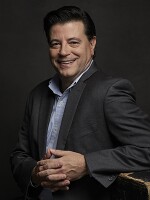Saturday, July 20th marks the 50th anniversary of the Apollo 11 Moon Landing. Several Connecticut companies played an important role in the historic mission.
82 year-old Donald Rethke was a mechanical engineer at Hamilton Standard in Windsor Locks in 1969. He helped design the life support systems and the heating system on the lunar module used in the moon landing.
Speaking on Connecticut Public Radio's Where We Live, he said on July 20th he and other engineers were holed-up in a makeshift mission control booth at Hamilton Standard.
“We actually threw out the managers, and took out our slide rules and our strip charts,” said Rethke. “We had a landline phone with a speaker attached to it -- if Houston had a problem they'd call us. In the corner we had a black-and-white TV set. I reported on duty to this area and stayed there for six hours during the walk on the moon. Actually we had no significant problems.”

Rethke’s knowledge of the lunar module was also instrumental in getting the Apollo 13 astronauts safely back to earth in 1970.
Two days into the mission an oxygen tank exploded in the command module, rendering it useless. The mission was aborted. Rethke and other engineers were tasked with figuring out how to get the astronauts safely home in the lunar module.
“They used the lunar module life support system as a lifeboat,” said Rethke. “That system was designed for two days for two astronauts on the moon. Now it became a lifeboat that was for four days for three astronauts. We were there for four days, port and starboard to help these guys get back to earth.”
Rethke later went on to develop a sit-down toilet system for astronauts on later missions, earning the nickname "Dr. Flush."






